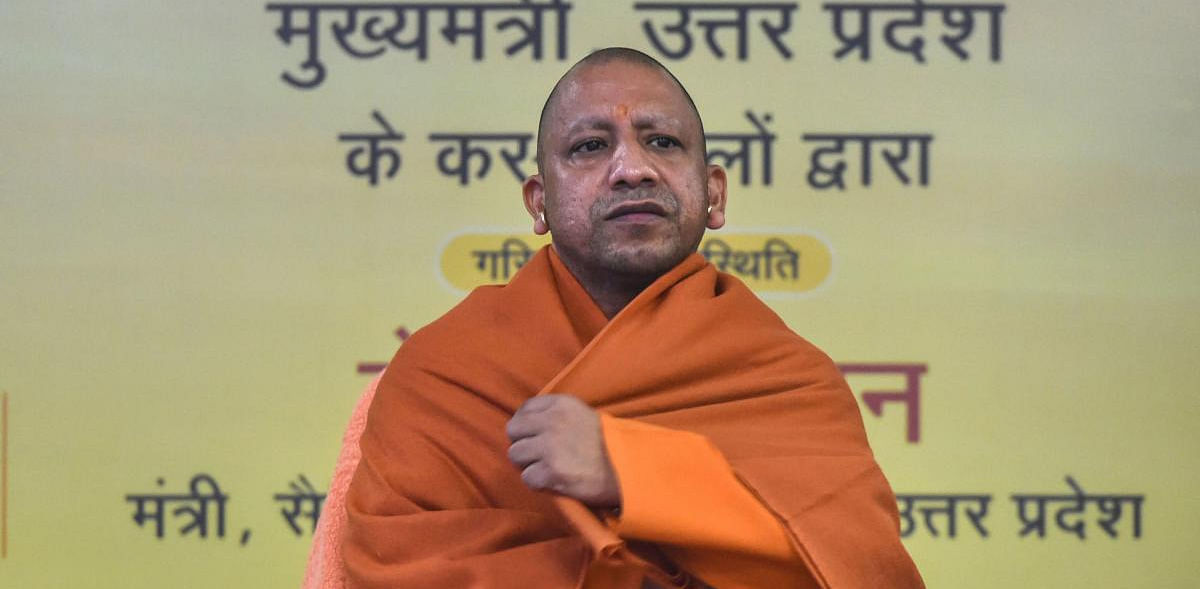
Amid raging debates, Uttar Pradesh government on Tuesday gave its nod to the law criminalising alleged attempts of deceitful or forced religious conversion of Hindu women to Islam in the guise of marriage.
This comes in the wake of a strong campaign by the Bharatiya Janata Party and the Right parties to stop interfaith marriages, termed 'love jihad' which they believe is a move by Muslim men to lure Hindu women away from their religion, by marrying them.
As arguments and counter-arguments shroud the much-discussed and controversial topic, let us take a look at what this law entails.
1. Conversion for the alleged purpose of marriage is, however, only one aspect of the draft ordinance.
2. The state government has said that the law also aims to prohibit religious conversion done using dishonest means, such as false representation, through force, influence, torture, allurement or for the sake of marriage.
3. Under the proposed law, a marriage will be declared “null and void” if the conversion of a woman is solely for that purpose (marriage).
Read: 'Love Jihad' needs to be first defined legally, says Shiv Sena
4. According to the ordinance, the onus to prove that conversion is not fraudulent lies both on the person carrying out the alleged conversion and the person undergoing conversion.
5. Those wishing to change their religion after marriage need to apply to the district magistrate two months in advance, according to the draft ordinance. Conversion will be allowed only after this permission is granted.
Also read: UP okays ordinance against 'love jihad', violators face up to 10 yrs in jail
6. “Those getting the conversion done in violation of the provisions of the proposed law would have to face jail term of up to 10 years,” The Indian Express reported quoting a government statement. If found that the conversion is done “forcibly, through atrocity or cheating”, the offence will be non-bailable, the report added.
7. Uttar Pradesh Cabinet Minister and government spokesperson Sidharth Nath Singh said the ordinance provides punishment with imprisonment for a minimum period of one year and a maximum period of five years besides a fine of Rs 15,000.
8. In case of minor girls and women from SC and ST communities, the minimum imprisonment would be two years while the maximum imprisonment will be ten years besides a fine of Rs 25,000.
Read more: Choice of partners by adults is a fundamental right, Allahabad HC quashes FIR against interfaith couple
9. Three years of minimum and ten years of maximum imprisonment will be meted out for mass religious conversion.
10. A fine of Rs 50,000 may be imposed on the offenders. In cases of mass religious conversion, the registration of the social organisations will be cancelled and strong action initiated against them.
In recent weeks, BJP-ruled states, such as Haryana and Madhya Pradesh have also hinted at enacting laws to counter attempts of 'love jihad'. However, distancing itself from the controversy, Shiv Sena on Tuesday said that 'love jihad' first needs to be legally defined before putting such kaws in place.
The ordinance comes within days of UP Chief Minister Yogi Adityanath's warning that those indulging in 'love jihad' must prepare for their 'Ram Naam Satya' journey.
"We will bring an effective law. It is my warning to those who play with the honour and dignity of sisters and daughters by hiding their real names and identities. If they do not mend their ways, their ''Ram Naam Satya'' journey will start," he had said, referring to the funeral chant, reiterating his stern threat.
(With agency inputs)